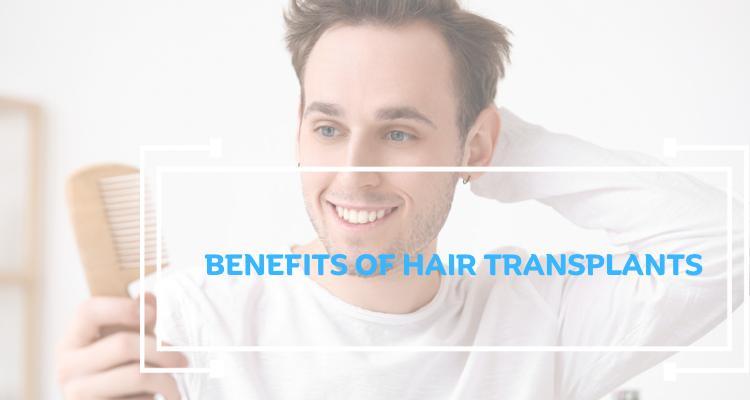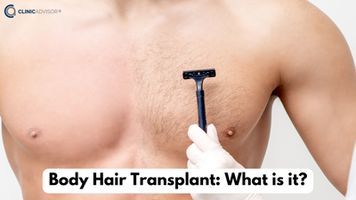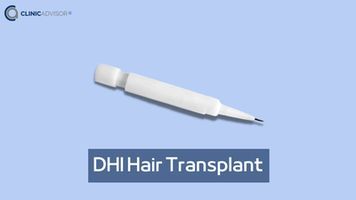Hair transplantation is a surgical technique that involves removing hair follicles from one part of the body, typically referred to as the 'donor site', to a bald or balding part of the body, known as the 'recipient site'.
Hair, often seen as a sign of youth and vitality, is essential for many in their self-perception and self-worth. Not just an aesthetic feature, hair also acts as a shield against UV rays, insulates the scalp, and provides sensory feedback. Beyond its physiological roles, hair has significant psychological implications, influencing confidence, self-esteem, and social interactions.
Hair transplant procedures can also bring along a suite of benefits, such as restoration of natural hairlines, filling thinning areas, and even enhancing eyebrow or beard density. It's not just about aesthetics; it's a holistic approach to wellbeing and self-confidence.
The World Health Organization recognizes the importance of mental well-being and body image in overall health. A study from the University of Pennsylvania highlights the emotional distress and social anxieties associated with hair loss, emphasizing the broader ramifications beyond physical appearance.
Thus, queries emerge about the effectiveness of hair transplantation, its long-term benefits, the ideal candidates for the procedure, and potential side effects. In this article, we will delve into the multifaceted benefits of hair transplantation, as illustrated in the subsequent sections.
Hair Transplant Benefits:
- Restores Natural Hairline
- Boosts Self-Esteem
- Enhances Aesthetic Appearance
- Offers Permanent Results
- Addresses Male Pattern Baldness
- Fills Thinning Areas
- Enhances Beard and Eyebrow Density
- Uses Your Own Hair
- Mimics Natural Hair Growth
- Avoids Scarring
- Quick Recovery Process
- Increases Social Opportunities
- Cost-Effective in the Long Run
- Combats Aging Signs
- Safe and Reliable
- Minimal Maintenance
- Improved Personal Relationships
1-Restores Natural Hairline
A hairline is a defining feature of one's appearance, often framing the face and adding character. It plays a crucial role not just in defining facial aesthetics but also in determining age and overall appearance.
Considerable studies in the realm of cosmetic surgery have explored the impact of a receding hairline on perceived age and attractiveness. The universal consensus: a full and naturally-placed hairline makes an individual look younger and more appealing. This attractiveness can be compromised when one experiences hair loss, especially in the frontal region.
Research from the European Society of Hair Restoration Surgery highlights that restoring the natural hairline through transplantation procedures can effectively reverse the signs of premature aging associated with receding hairlines. Another investigation from the Dermatology Department at Yale University documented that patients who underwent hair transplant procedures reported a substantial boost in self-confidence and satisfaction with their appearance.
2-Boosts Self-Esteem
Self-esteem, in essence, refers to an individual's sense of value or worth. It's the foundation on which confidence, interactions, and even mental well-being rest.
Hair loss, despite being a natural phenomenon, can often lead to feelings of inadequacy or decreased self-worth. The significance of hair in societal norms and beauty standards plays a considerable role in this perception. Hair transplant, by addressing the root cause of the issue, directly impacts and improves the individual's self-esteem.
The correlation between hair transplantation and improved self-esteem has been underlined in numerous studies. For instance, a report published in the International Journal of Trichology observed a significant improvement in self-perception and self-esteem among participants post hair transplant surgery.
A study conducted by the American Society of Plastic Surgeons focused on the psychological impacts of hair loss and the benefits of hair transplantation. It was observed that post-surgery, individuals experienced reduced social anxiety, decreased feelings of depression, and a rejuvenated sense of life enthusiasm. Another research piece from the University of Manchester emphasized the direct link between hair restoration and improved quality of life in terms of mental health and social interactions.
3. Enhances Aesthetic Appearance
Aesthetic appeal goes beyond mere vanity. It's about the harmonious alignment of features, and hair plays a crucial role in this alignment. Hair, especially on the crown, complements facial features, enhancing symmetry and appeal. With balding or thinning areas, the aesthetic balance may be disrupted, causing a noticeable difference in appearance. Hair transplantation remedies this imbalance. By restoring hair to thinning or bald areas, the procedure not only returns the hair but restores facial symmetry, ultimately enhancing the overall aesthetic appeal.
4. Offers Permanent Results
One of the standout advantages of a hair transplant over other hair restoration methods is its permanency. Unlike solutions that require ongoing treatment or maintenance, a hair transplant offers long-lasting results. The transplanted hairs are typically extracted from areas unaffected by hair loss, meaning they retain their resilience against balding. Several studies, including those from the International Society of Hair Restoration Surgery, have highlighted the durability and sustainability of hair transplant results, making it a once-in-a-lifetime investment for many.
5. Addresses Male Pattern Baldness
Male Pattern Baldness (MPB), medically termed Androgenic Alopecia, is a genetic condition affecting many men worldwide. It starts as a receding hairline followed by thinning atop the crown, potentially leading to complete baldness. Hair transplantation has emerged as a definitive solution for MPB, allowing men to regain lost hair and combat genetic predispositions effectively. By directly addressing and rectifying MPB, hair transplantation ensures that men no longer have to be bound by their genetics when it comes to hair loss.
6. Fills Thinning Areas
Whether it's the result of age, genetics, or environmental factors, thinning hair can impact any region of the scalp. Sometimes it's the crown; other times, it's specific patches that seem to thin more rapidly than others. Hair transplantation specializes in addressing these inconsistent balding patterns. By extracting hair from denser regions and implanting them into the thinning areas, this surgical procedure ensures consistent hair density across the scalp. This targeted approach ensures that any area, no matter how sparse, can be rejuvenated to its former density.
7. Enhances Beard and Eyebrow Density
Hair transplant isn't confined to just the scalp. With modern techniques and advancements, specialists can restore or enhance hair density in areas such as beards and eyebrows. For individuals who have sparse growth in these areas due to genetics, scars, or any other reasons, transplantation can offer a fuller, more defined beard or eyebrows. According to the American Academy of Facial Plastic and Reconstructive Surgery, there's been a notable increase in facial hair transplants, underscoring their growing popularity and effectiveness.
8. Uses Your Own Hair
One of the main advantages of hair transplant surgery is the use of an individual's own hair. This means that the transplanted hair will not only look but also feel natural. There's no risk of a mismatch in texture, color, or growth pattern. It integrates seamlessly with the existing hair, ensuring that post-operative results appear as natural as possible. A publication from the Dermatologic Surgery journal emphasized that using one's own hair ensures the highest chances of graft survival and overall procedure success.
9. Mimics Natural Hair Growth
Hair transplantation has come a long way from its early days. Modern techniques ensure that transplanted hair mimics natural growth patterns, offering an undetectable result. The direction, angle, and pattern of implantation are meticulously designed to mirror natural growth, making it almost impossible to differentiate transplanted hair from the original. This authenticity is highlighted by numerous clinical evaluations, including those from the European Journal of Dermatology.
10. Avoids Scarring
Modern hair transplant techniques, especially Follicular Unit Extraction (FUE), leave minimal to no visible scars. Unlike older methods, which often resulted in a noticeable linear scar, today's advanced procedures ensure that post-operative marks are virtually undetectable. This advancement has been celebrated in many cosmetic surgery circles, with the Journal of Plastic, Reconstructive & Aesthetic Surgery noting the increasing preference for scar-minimizing techniques among patients.
11. Quick Recovery Process
Contrary to some beliefs, the recovery period for a hair transplant is relatively short. Most patients can return to their regular activities within a week. While minor swelling or discomfort might be experienced initially, these symptoms usually subside within a few days. This quick turnaround time, highlighted in the International Journal of Women's Dermatology, ensures that patients can enjoy the benefits of the procedure without prolonged downtime.
12. Increases Social Opportunities
A full head of hair often translates to heightened confidence in social situations. Whether it's meeting new people, attending events, or simply socializing more freely, the added confidence from a successful hair transplant can open doors to more social opportunities. In a society where appearance often plays a pivotal role in first impressions, having a rejuvenated hairline can indeed be a game-changer in interpersonal interactions.
13. Cost-Effective in the Long Run
While the upfront cost of hair transplantation may seem significant, when viewed as a long-term investment, it's surprisingly cost-effective. Compared to over-the-counter treatments, medications, and hair systems which require ongoing expenses and maintenance, a hair transplant offers a more permanent solution with fewer recurring costs. When considering the cumulative costs of these alternative treatments over the years, hair transplantation presents a more economically viable option.
14. Combats Aging Signs
Balding or thinning hair is often associated with aging. By restoring hair density, hair transplants can provide a more youthful appearance, helping individuals feel and appear younger. This rejuvenated appearance can have a ripple effect, enhancing one's overall outlook on life and promoting a more positive self-image. A study in the Archives of Plastic Surgery highlighted the positive psychological effects of cosmetic procedures, including hair transplantation, in combating signs of aging.
15. Safe and Reliable
Modern hair transplant techniques have been refined over decades, with a keen emphasis on safety and reliability. When performed by skilled professionals, the risks associated with the procedure are minimal. Additionally, the predictability of the results, as attested by the International Society of Hair Restoration Surgery, ensures that patients have a clear understanding of what to expect, leading to higher satisfaction rates.
16. Minimal Maintenance
One of the unsung advantages of hair transplantation is the ease of maintenance. The transplanted hair behaves like natural hair, growing at a similar rate and requiring no special shampoos or products. This means that once the hair transplant has fully healed, there's no need for expensive hair care products or treatments. The individual can treat their new hair just as they would their natural hair.
17. Improved Personal Relationships
Confidence and self-esteem play crucial roles in personal relationships. As hair transplantation boosts an individual's self-worth, many find it easier to form and maintain personal relationships, be they platonic or romantic. Feeling better about one's appearance can lead to being more open, communicative, and confident in interpersonal situations, enriching personal bonds and connections.
What is the Ideal Age for Hair Transplant?
The ideal age for a hair transplant varies significantly, much like the recommended water intake differs based on factors like age and activity. While hair transplants can be done as early as the 20s, it's crucial to consider the pattern and rate of hair loss. Some experts advise waiting until one's 30s or even 40s when hair loss patterns are more established, reducing the chances of subsequent procedures.
What Should You Consider Before a Hair Transplant?
Before diving into a hair transplant, much like assessing the right amount of water intake, several factors need consideration:
- The quality and quantity of donor hair.
- The long-term goals and expectations.
- The expertise and reputation of the surgeon.
- The potential need for future sessions.
- Financial and time commitments.
Is Hair Transplant Suitable for Women?
Just as both men and women have different recommended water intake levels, hair transplant needs and results differ by gender. Women can benefit from hair transplants, especially if they suffer from patterned hair loss. The procedure can restore volume and coverage, but it's essential to have a thorough consultation to assess the cause of hair loss and determine the best approach.
How to Take Care After Hair Transplant?
Post-hair transplant care is akin to ensuring you stay hydrated during the day. Essential steps include:
- Avoid strenuous activities and direct sun exposure.
- Following a prescribed washing routine.
- Taking medications, if provided, to prevent infections.
- Keeping the scalp clean and moisturized.
- Refraining from scratching or rubbing the transplanted area.
What Are the Risks and Side Effects of Hair Transplant?
Like drinking too much water can lead to adverse effects, hair transplants, though largely safe, have potential risks:
- Scarring in the donor area.
- Infection or inflammation of hair follicles.
- Shock loss or sudden hair loss post-surgery.
- Unnatural-looking hairline if not done expertly.
- Itchiness or numbness in the treated areas.
When Can You Expect Results from Hair Transplant?
Similar to how drinking water in the morning sets the tone for the day, the initial results from a hair transplant set the tone for the final outcome. Initial growth can be seen as early as three months post-operation, but the full, natural-looking results might take up to a year or even 18 months to materialize.
What’s the Difference Between FUE and FUT Methods?
In the realm of hair transplant techniques, the FUE and FUT methods can be likened to different ways of hydrating. While both aim to restore hair, FUE involves individual follicular extraction, leading to minimal scarring. FUT, on the other hand, involves removing a strip of donor skin, often resulting in a linear scar. Both methods have their pros and cons, much like choosing between tap water and luxury bottled water.
How Does a Hair Transplant Compare to Other Hair Restoration Methods?
When weighing hair transplants against other restoration methods, it's akin to comparing drinking water to other beverages. While hair transplants offer permanent, natural-looking results, other methods like hairpieces, medications, or PRP therapy offer temporary or maintenance-heavy solutions. Each has its benefits, but the sustainability and authenticity of results can differ significantly.
What Happens if You Lose More Hair After a Transplant?
Losing hair post-transplant can be compared to dehydration after drinking water—it's not the expected outcome. Known as "shock loss," this temporary hair loss can occur in areas around the transplant but usually resolves within a few months. However, continued natural hair thinning might necessitate future sessions to maintain a full appearance.









Share Your Opinion, Please